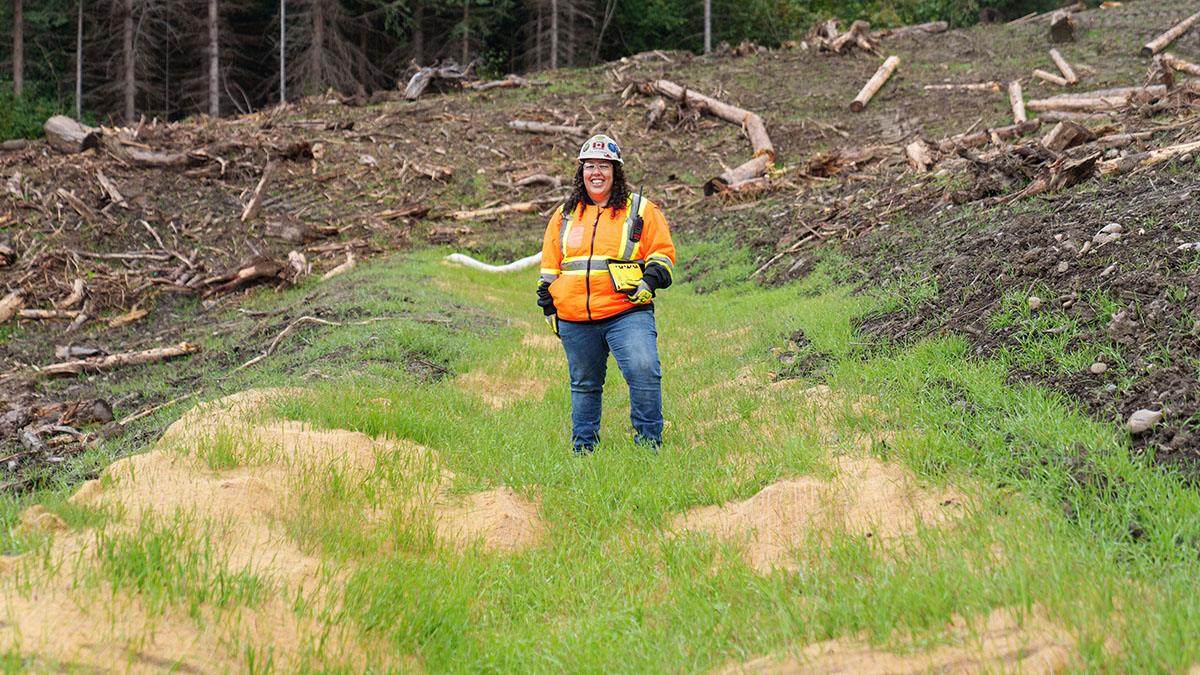Construction
Coastal GasLink is a critical component of TC Energy’s journey to delivering the energy the world needs while creating lasting benefits here at home. With construction safely completed, we are currently focused on post-construction activities including clean-up, reclamation, and monitoring, and preparing for other growth opportunities related to Coastal GasLink.
Coastal GasLink is the result of nearly a decade of planning, consultation, and rigorous environmental assessment.
Construction updates
Construction notifications
Various pipeline construction activities will be shared with stakeholders through notifications. These include:
Blasting: Blasting is done in the clearing phase of construction to break rock for excavation. All blasting activities are done in accordance with provincial and federal regulations.
Traffic interruptions: Construction activities that interfere with traffic fall within our notification guidelines.
Burning: As the right-of-way is cleared, timber is saved to be processed by the forest industry. Vegetation that is not suitable for repurposing, such as branches and shrubs, are burned in approved areas and on days permitted by local forestry burning rules in compliance with the provincial regulations.

Drone flight: Coastal GasLink uses drones to survey route topography for clearing activities. Drones provide an efficient and unobtrusive way to view the project corridor including conditions and terrain. All drone operations are done in accordance with provincial and federal regulations.
Construction notifications
Water crossing notifications
Coastal GasLink is constructing a pipeline that includes crossings of rivers and other water bodies. A typical work is a temporary bridge installed for construction and then removed after construction.
Where work at a crossing might affect navigation, even temporarily, Coastal GasLink posts a notice such as the ones below, to inform you of the application and planned work, and of where additional information can be found.
Transport Canada’s window for public comment is 30 days from the date a crossing is added to Coastal GasLink’s notification list.
Please submit any comments you have on a crossing application directly to Transport Canada on their website, using the Crossing ID file number listed in the notification list.
Water withdrawal notifications

The right-of-way
The Coastal GasLink pipeline project right-of-way is approximately 45 metres wide and spans 670-kilometres.
With construction is complete, the right-of-way will be maintained at approximately 32 metres in width, and we’ll keep the area above the pipe clear of trees and branches. The width of the permanent right-of-way may vary depending on local requirements.
The pipeline is buried under the ground for all of its 670-kilometres, except at specific locations such as fenced valve sites and compression stations.
Following construction, the right-of-way is stabilized and the ground surface is contoured to re-establish original drainage patterns. The topsoil is replaced, allowing for the re-establishment of appropriate vegetation. We are committed to restoring the land as close to its original state as possible.
Read about environmental considerations on the right-of-way.